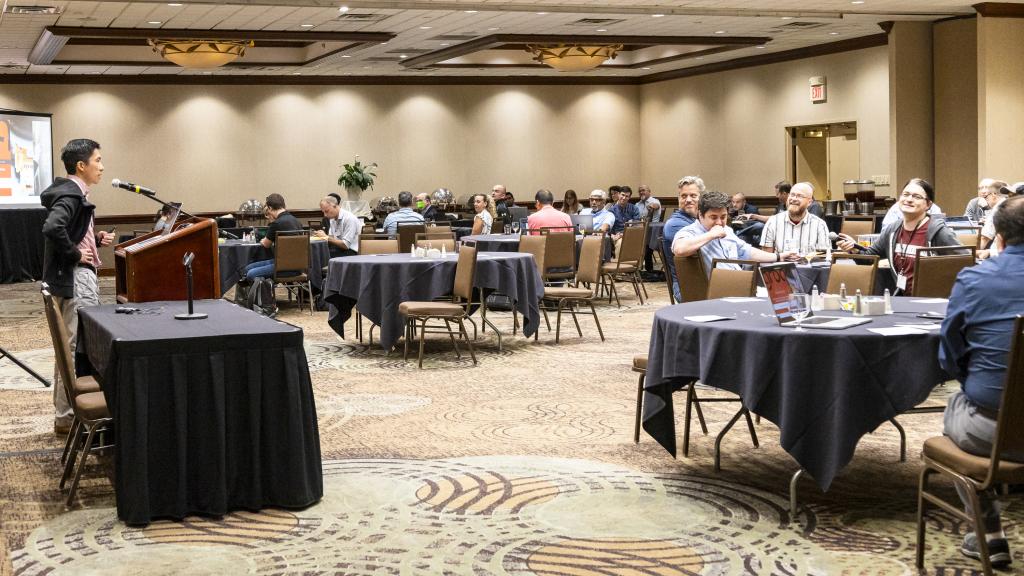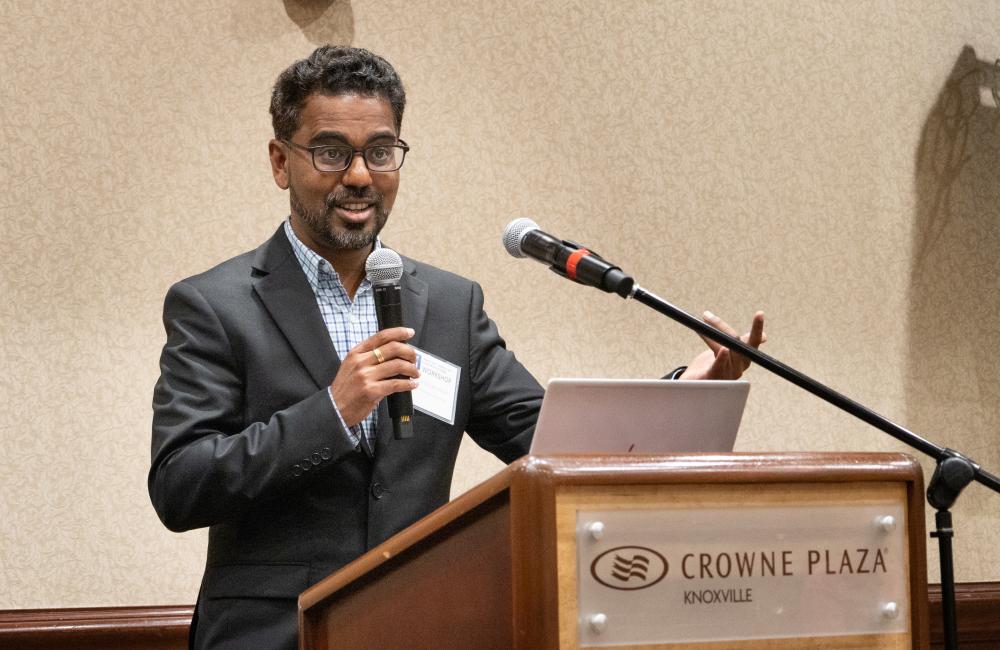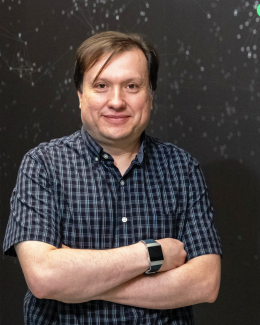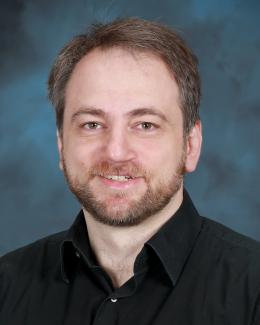Director of ORNL’s AI Initiative Prasanna Balaprakash addresses attendees at the Generative AI for ORNL Science Workshop. Credit: ORNL, U.S. Dept. of Energy
The Department of Energy’s Oak Ridge National Laboratory hosted its Smoky Mountains Computational Science and Engineering Conference for the first time in person since the COVID pandemic broke in 2020. The conference, which celebrated its 20th consecutive year, took place at the Crowne Plaza Hotel in downtown Knoxville, Tenn., in late August.
This year’s conference was themed “Peering into the future: Accelerating science and engineering discoveries through advanced technologies, integrated research infrastructures for experiments, machine learning/AI, and modeling and simulation.” To get it started, nearly 100 researchers participated in a co-located workshop focused on the burgeoning field of artificial intelligence.
The Generative AI for ORNL Science Workshop provided a venue to educate and exchange research and development ideas, collaborations and investments around the current state-of-the-art in these relatively new technologies that have enormous potential to revolutionize both scientific discovery and society by facilitating the creation of content that emulates human creativity.
Generative AI technologies include large language models such as OpenAI’s Generative Pre-trained Transformer, or ChatGPT, and Google's Bidirectional Encoder Representations from Transformers, or BERT. Besides understanding their impact and limitations, there is a critical need to ensure their correctness, verify their outputs and promote safe usage, especially in the context of DOE’s scientific mission.
The workshop, SMC’s second focusing on safe, trustworthy and energy-efficient AI models, featured a range of speakers from the national labs, industry and academia, and explored a wide array of topics including best practices for using these models in scientific research, methods to ensure they are used safely and correctly and their advantages and limitations.

“We wanted to bring the best researchers and computational scientists currently exploring how to use AI for science and connect them with state-of-the-art technology from the industry to find synergies and form connections,” said Oscar Hernandez, senior computer scientist at ORNL and workshop organizer. “The workshop aimed to take these ideas to the next level for scientific discovery and accelerate breakthroughs across a range of domains, from climate to biology to materials.”
ORNL’s Edmon Begoli, head of the lab’s AI Systems R&D Section, delivered the keynote. Titled “AI Security Research: A New Science at the Intersection of AI and Cybersecurity Research,” the talk explored the numerous implications of AI on national security. These include autonomous war, enhanced malware attacks and image recognition deception.
A lightning talks session featured 10 talks in an hour and fifteen minutes and covered a vast range of applications for these models, including their potential to revolutionize climate and biology as well as improve their energy efficiency. A working lunch, titled “Generative AI and Large Language Models with Sambova Systems,” featured the AI cloud company’s Jennifer Glore and Ken Kutzer.
Closing remarks were delivered by Hernandez, ORNL’s program director for Artificial Intelligence Prasanna Balaprakash and ORNL senior computer scientist William Godoy.
For more information, visit https://ornl.github.io/events/SMCAI-August-2023/ and https://smc.ornl.gov.
UT-Battelle manages ORNL for the DOE Office of Science. The Office of Science is the single largest supporter of basic research in the physical sciences in the United States and is working to address some of the most pressing challenges of our time. For more information, please visit energy.gov/science.






